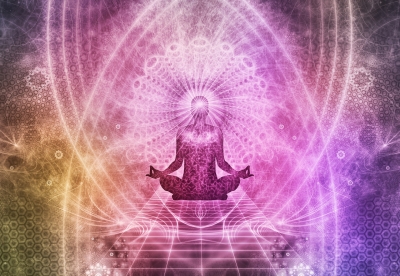By Aditi Roy
New Delhi: Mothers are natural givers whose entire being is focussed on nourishing, and nurturing their children and families. There is no other role in the world which is as physically, mentally and spiritually demanding than that of motherhood. It requires utmost dedication, relentless effort, sleepless nights, innumerable sacrifices and sheer hard work.
“Whether through asanas, pranayama or meditation; even by simply observing the flow of your breath – inhale (Purak), retention (Kumbhak) and exhalation (Rechak), one can feel the marked difference. Yoga brings an almost instant feeling of calmness and relaxation. When mothers are strong, families are strong. Therefore, it is imperative for every mother to dedicate time for herself, some special ‘me time’ to grow, enrich herself and to glow up! Commit to a minimum of 30-45 minutes at least 3 times a week to the practice of yoga. Early mornings are ideal to begin your practice. Start the Sukshma Vyayam or subtle exercises to thoroughly warm up the body before going into yoga asanas. The practice of meditation is also a highly recommended as this influences the rate at which your body can heal itself. Meditation techniques can improve your mood, calm your mind and help relax,” suggests yoga coach Akhsar.
Surya Namaskar
? Surya Namaskar or the Sun Salutation is best practiced early in the morning before sunrise.? Benefit through physical and mental strength, get command over your body, calm your mind, balance your energies, and bring peace to your consciousness.
Steps to perform Surya Namaskar
? Pranam Asana (The Prayer pose)
? Hastha Utanasana (Raised arm pose)
? Padahastasana (Standing forward bend)
? Ashwa Sanchalanasana (Equestrian pose)
? Santholanasana (Plank Pose)
? Ashtanga Namaskar Asana (Eight limbed salutation)
? Bhujangasana (Cobra pose)
? Adho Mukha Svanasana (Downward dog pose)
? Ashwa Sanchalanasana (Equestrian pose)
? Padahastasana (Standing forward bend)
? Hastha Uthanasana
? Pranam Asana
(Repeat the 12 steps to the other side and start with the Left leg to complete one full cycle.)
Chandra Namaskar
? Chandra Namaskar must be practiced at 6 pm facing the Moon.
? Performing this namaskar during full moon nights is extremely nourishing to the body and spirit.
Chandra Namaskar – 14 steps make half the cycle
1. Pranam asana (The Prayer pose)
2. Hastha Utanasana (Raised arm pose)
3. Padahastasana (Standing forward bend)
4. Ashwa Sanchalanasana (Equestrian pose)
5. Inhale and bend back (Ardha Chandra asana)
6. Santholanasana (Plank Pose)
7. Ashtanga Namaskar Asana (Eight limbed salutation)
8. Bhujangasana (Cobra pose)
9. Adho Mukha Svanasana (Downward dog pose)
10. Ashwa Sanchalanasana (Equestrian pose)
11. Inhale and bend back (Ardha Chandra asana)
12. Padahastasana (Standing forward bend)
13. Hastha Utanasana
14. Pranam asana
Repeat the 14 steps with the Right leg to make it 1 complete cycle with a total of 28 counts
Vajrasana
Vajrasana is also known as Thunderbolt Posture or Lightning Bolt Pose. This is the only pose that can be done on a full stomach. In fact, it should be done right after having a meal. Vajrasana is a posture that is simple, and yet very effective. One of its many benefits is that strengthens the back, and considering mothers are the spine of every household – it is important for them to maintain and strong and healthy back.
Formation of the posture
Begin by standing straight with your arms by the sides of your body, lean forward and slowly drop your knees on your mat.? Place your pelvis on your heels and point your toes outward, here, your thighs should press your calf muscles, keep your heels close to each other.
Do not place the toes on top of the other, instead right and left must be next to each other, place your palms on your knees facing upward.
Straighten your back and look forward
Repeat 3 sets of 30 seconds each
Padahastasana
Padahastasana also known as ‘Hand to Foot Pose’ is a deep forward bend and falls under the category of intermediate level yoga postures. Therefore, this pose needs to be done slowly, and at your own pace. Make sure that you are completely warmed up before you attempt it.
Padahastasana benefits your entire digestive system, stretches your back and hamstrings, invigorates the nervous system and strengthens the spine.
Padahastasana balances the body and mind by bringing together the higher and lower states of awareness and consciousness. This brings calmness and well-being for a life of harmony and health which is much needed for mothers in today’s modern world.
Formation of the posture
Begin by standing in Samasthithi
Exhale and gently bend your upper body, dropping your head and keeping your shoulders and neck relaxed
Bring the trunk closer to the legs. Try to touch the knees with the forehead. This may require lot of flexibility. If you are starting out your practice, go only as far as it is comfortable.
When you are folding forward, attempt to move your torso from the hip joints, instead of the waist.? Place palms on either side of feet.
Try to keep the legs and knees straight throughout the practice. If you are a beginner, you may have to bend your knees slightly to accomplish this.
With practice, slowly straighten your knees and try to touch your chest to your thighs, hold this asana for a while.
Breathing Methodology -Exhale as your bend down. Inhale as you release from the posture.
Meditation Techniques
Super Power Meditation
To practice this, seat yourself on a peak of the mountain in Sukhasana or any other comfortable pose that gives you the shape of a pyramid.
The intention is to sit in the shape of triangle atop a mountain. In this position, you need to visualize a reverse triangular shield in your chest and then meditate.
During the meditative process, with every inhale, this shield allows you to welcome all the positive energies of the world into you. And, as you exhale you release unwanted stress.
(Aditi Roy can be contacted at [email protected])
–IANS


















